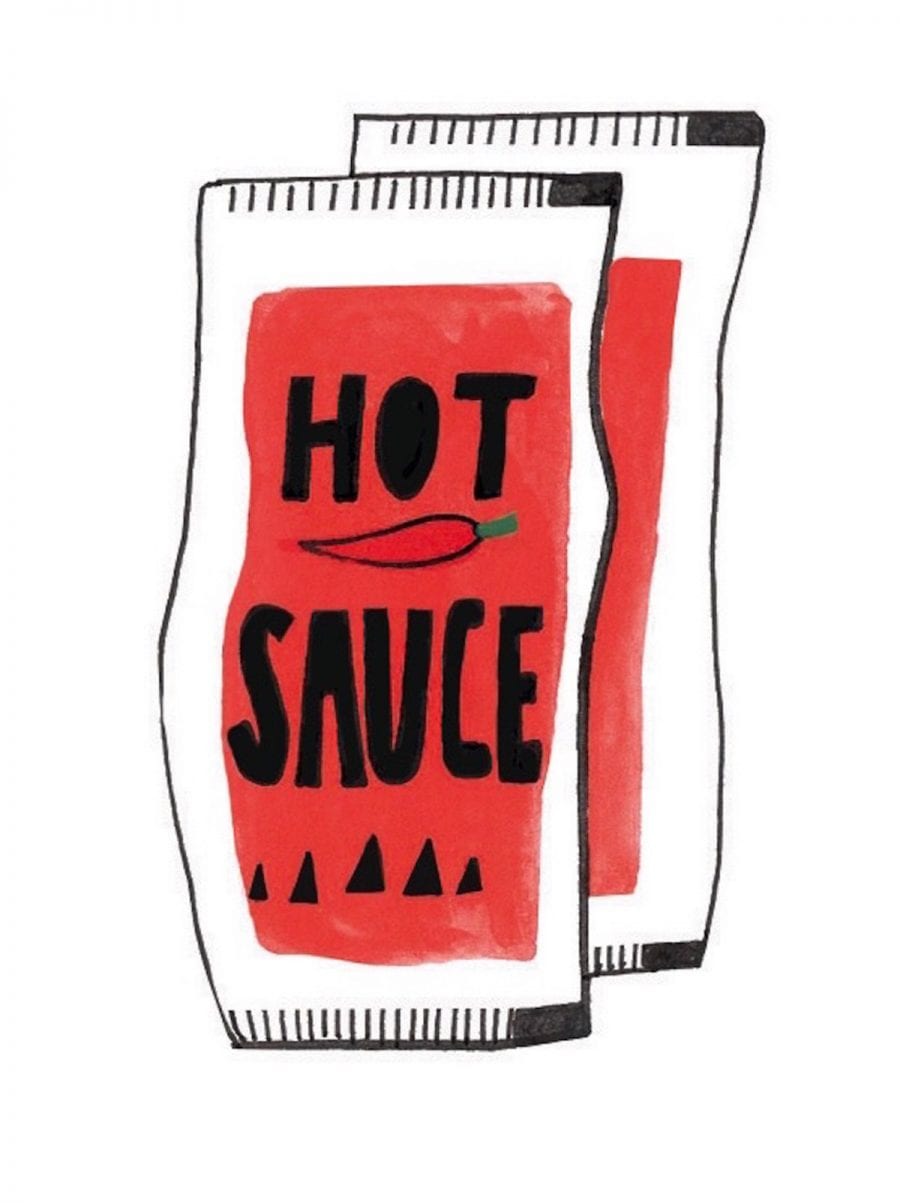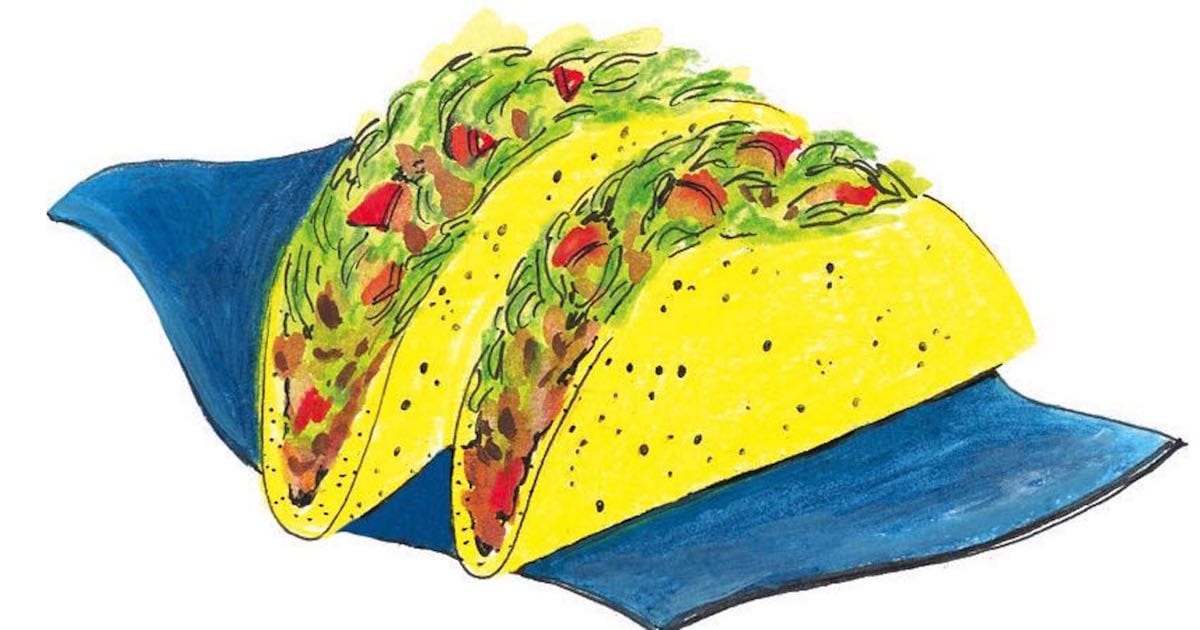Speedy’s Path to Ubiquity
Awhile back, I was looking for dinner in Fort Lauderdale, Florida. One nearby option was a Mexican restaurant, and I was surprised to see online reviewers describe the fare as “comfort food.”
Maybe it was a South Florida thing I thought, a local restaurant featuring authentic home-style dishes that reminded people of their grandmothers’ cooking, the way that cornbread or mac n’ cheese might in other parts of the South.
But closer inspection revealed that it was just another one of those cookie-cutter Tex-Mex places that you find all over the South: sombreros on the wall, a free basket of chips while you peruse the standardized slate of numbered platters offering every possible combination of tacos, enchiladas, burritos, and chiles rellenos.
They even had the “Speedy Gonzales” special on the lunch menu. Whether you are in Alpharetta or Knoxville or Tuscaloosa, that particular plate is always the same: a taco, an enchilada, and your choice of rice or beans.
But how on earth did that come to be? How could the same name be adopted at seemingly independent Mexican restaurants all across the South, and with the exact same components?
As it turns out, it all started with a dirty joke that spread like wildfire across the country in the early 1950s. I turned up a version in G. Legman’s Rationale of the Dirty Joke: An Analysis of Sexual Humor (1968), which I’m sure you have on your shelf at home. I’m not about to repeat it here, for it manages to be filthy, wildly offensive, and completely unfunny all at the same time. Suffice it to say that the main character is a Mexican lothario named Speedy Gonzales.
Folks in the ‘50s sure split their sides over it. Within a few years, just about anyone of note with the last name Gonzales—especially athletes and sportsmen—were bound to be dubbed “Speedy.” The sports pages in Petaluma, California, chronicled a drag racer named Speedy Gonzales tearing up the local tracks in 1951. Other notable Speedys included a yacht racer, a baseball pitcher, a tennis pro, a fiddle player, and a ninety-pound wrestler named Vittorio “Speedy” Gonzales. David Dante released a dreadful novelty song called “Speedy Gonzales” in 1961, which was later covered by Pat Boone, Charo, and a dozen other artists of questionable taste.
It might have ended there if it wasn’t for the cartoon. As the joke was making the rounds in Southern California, Bob McKimson borrowed the name for a mouse in Cat-Tails for Two (1953), an animated short he was directing for Warner Brothers. Two years later, Friz Freleng and Hawley Pratt gave the mouse the starring role in Speedy Gonzales, and he remained a Looney Toons fixture for decades.
Warner Brothers ensured Speedy Gonzales would stay a household name long after the dirty joke was justly forgotten. I guess it was only a matter of time before it got applied to a platter of Tex-Mex food. By 1970, El Palacio in Amarillo, Texas, was advertising a “Speedy Gonzales’ Pronto” option on its lunch menu, but it differed from today’s canonical version—a chile relleno with two tacos. Other 1970s variations include Pepe’s in Port Angeles, Washington (two beef enchiladas, rice, and beans) and Charlie’s El Burrito in Greenville, Mississippi (taco, enchilada, and tamale with chile con carne.)
It took an extended family of restaurateurs from Jalisco, Mexico, to codify the Speedy Gonzales lunch special in its now-iconic formulation, and they did so in Atlanta.
In March 1980, Juan Coronado of the Jalisco Restaurant told the Atlanta Constitution that his popular weekday lunch special was the Speedy Gonzales. “It includes a taco, enchilada, and choice of rice and beans,” the reporter noted, “for $1.75.” Coronado had come to Atlanta a few years before at the urging of a cousin, who operated several local restaurants called El Toro.
El Toro featured the Speedy Gonzales on its menu, too, and that cousin, Jose Macias, may well have been the originator. Macias and his wife, Ana Maria, were natives of San Jose de la Paz, a small town about two hours east of Guadalajara. They moved to Atlanta in 1974 after picking fruit in California and making plastic in a Chicago factory, settling in Georgia because, as Ana Maria put it, “there weren’t many Mexican restaurants in Atlanta” at the time.

That had changed by the mid-1980s, and the Atlanta Yellow Pages listed more than a hundred Mexican restaurants. Many were owned by members of Jose Macias’s extended family, and he estimated that a hundred of his relatives had moved to the area to work in the Mexican restaurants that were popping up like mushrooms all around the city. Most of them featured the Speedy Gonzales lunch platter.
The platter made its way across the Georgia state line as ex-employees struck out to new cities to establish their own businesses. It appeared at Monterrey Restaurante Mexicano in Greenville, South Carolina, in 1986, at Mexico Restaurant in Greensboro in 1989, and at El Toreo in Tallahassee the same year. By the early 1990s the Speedy Gonzales had zipped up to Virginia and Kentucky, then headed out to the Midwest, arriving in Davenport, Iowa, by 1996. The lineup was the exactly the same—one taco, one enchilada, and a choice of rice or beans.
It was at that Monterrey in Greenville that my teenage palate first encountered what I judged to be “real” Mexican food—the kind served on super-heated plates by waiters who spoke Spanish as their native tongue. It seemed very strange and exotic.
Going back now and reading reviews from the 1980s is a vivid reminder of just how novel Mexican food was then. Menus routinely supplied pronunciation guides to help baffled Southerners order “tah-kos” and “en-che-lah-dahs.” Reviewers repeatedly reassured diners that the fare wasn’t all that spicy—a concern that seems downright quaint today, when salsa outsells ketchup and stunt eaters gobble down habaneros and Carolina Reapers.
We’re all so much more sophisticated now. Food trucks serving “real tacos”—the kind made with pork al pastor or beef tongue on soft corn tortillas—arrived in the South just after the financial crash of 2008. The years that followed brought tortas, posole, Sonoran-style hot dogs, and delicate ceviches sparkling with herbs.
Today’s cognoscenti insist upon house-made tortillas and slow simmered moles, and they sniff disdainfully at old standbys like the Speedy Gonzales platter. (Really they do. Here’s one of the milder opinions from an online food forum thread on the topic: “I have only found one or two Mexican restaurants that even moderately pique my interest. The rest are all crap and slop.”)
But hard-shelled tacos and enchiladas still have their fans. They may have even become traditional Southern comfort food—a soothing meal that reminds us of our youth.
Put me in that camp. Recently, after a long morning of work, I ducked out to grab lunch at the Mexican restaurant up the street. I ordered the Speedy Gonzales and reveled in the crunch of the hard taco shell and the gobs of soft, slightly-melted white cheese inside. The orange sauce on the enchilada was warm and mild, offset nicely by crisp bits of shredded iceberg lettuce.
That combination seemed so foreign and weird just a few decades ago, but it’s now familiar and soothing. I take comfort in that.
This story was originally published in the February 2019 issue.
share
trending content
-
FINAL Vote for Your Favorite 2025 Southern Culinary Town
-
Get To Know Roanoke, Virginia
-
Shrimp and Grits: A History
by Erin Byers Murray -
New Myrtle Beach Restaurants Making Waves
-
FINAL VOTING for Your Favorite Southern Culinary Town
More From On the Road
-
Get To Know Savannah, Georgia
-
Main Street Revival
-
Get To Know Durham, North Carolina
-
Get To Know Spartanburg, South Carolina
-
Join Aiken’s Unexpected Culinary Journey









